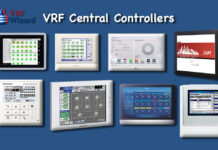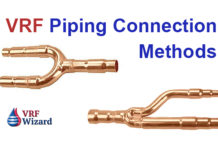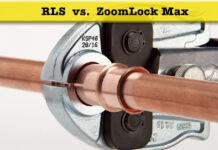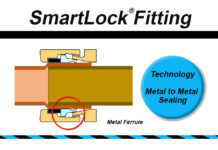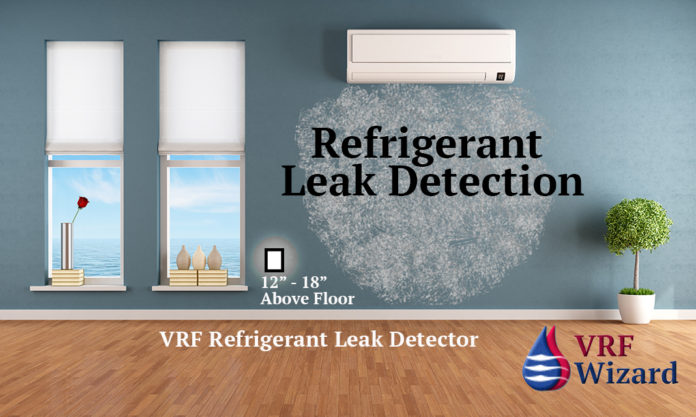Refrigerant Monitoring Code Requirements
ASHRAE 15 requires the monitoring of refrigerant leaks under certain conditions within a mechanical room, but what about an occupied space where refrigerant is circulated through VRF/VRV (Variable Refrigerant Flow) Indoor Fan Coils? When is a VRF Refrigerant Leak Detection system required in an occupied space?
The possibility of a leak is always present and its migration into the occupied space is sure to happen if this occurs. In some parts of Europe a refrigerant monitor is required for occupied spaces that have the capability of being diluted with a refrigerant leak. Although in the United States for the most part this requirement is met by applying the ASHRAE 15 & 34 calculation for the acceptable minimum room size based on the volume of refrigerant in the system.
Refrigerant Leak Detector Locations
The refrigerant monitor system is small enough to fit into an electrical outlet box, which makes for a quick installation and provides for an aesthetically pleasing appearance as it is flush mounted. The refrigerant leak detector should be mounted between 12” to 18” of the floor, as refrigerant is heavier than air and will accumulate along the floor. The refrigerant monitoring system can also be located in attic spaces where pipe manifolds, fittings or equipment connections may leak. Avoid putting refrigerant leak detection devices in areas that lack air movement, such as in corners or behind doors.
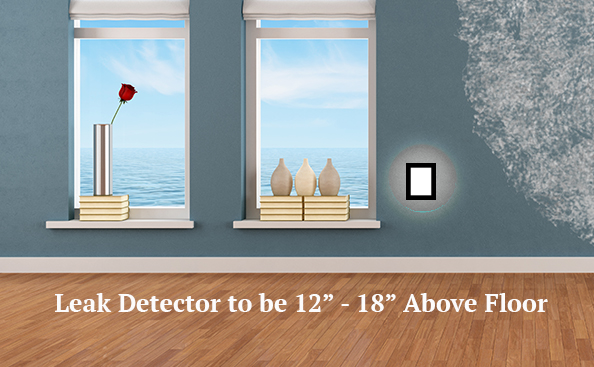
Refrigerant Monitoring System Alarms
The ability to have an audible alarm (Buzzer) and a visible display (LED) to indicate a leak is available to alert the occupants and the BMS or VRF Main Controller.
The sensor will shut down your HVAC or VRF/VRV system; notify your BMS or Main VRF/VRV Controller upon sensing a refrigerant leak in the occupied space. These refrigerant monitors can be used in any occupied space for an additional level of safety above the refrigerant volume limitations set by ASHRAE 15 & 34.
Highly recommended in spaces where individuals are non-ambulatory, disabled or advanced in age, such as senior facilities, hospitals, apartments, or for any living space such as hotels, dormitories, condos, townhouses, etc.
When is Refrigerant Leak Detection Required
ASHRAE 15 & 34 is the primary designed safety precaution used in the United States for protecting occupants of spaces using refrigerant capable of leaking into that space. The refrigerant monitor can be used as a secondary device for early notification of a leak, but shouldn’t be used as the only means of protecting the occupants.
The designing of the system in compliance with ASHRAE 15 & 34 is the first line of defense in safety. R-410A displaces the oxygen in the room which leads to an unsafe condition.
The use of a refrigerant monitor can provide early notification to the occupants of the space before the level of the refrigerant leak (Refrigerant Concentration Level) reaches that of the maximum set by ASHARE 15 & 34 for the spaces volume.
Refrigerant Leak Detection Manufactures
Here are two manufactures of these refrigerant alarms for use in occupied spaces, the Bacharach MVR-300 and the MSA Chillgard VRF Refrigerant Leak Detector for Variable Refrigerant Flow Systems.
Bacharach Refrigerant Leak Detector
Bacharach Refrigerant Leak Detector Website
Bacharach Data Sheet (EU – Polish)
MSA Chillgard Refrigerant Leak Detector
SensAC – Unlimited Controls
Leave us a comment on how you have used leak detection?


